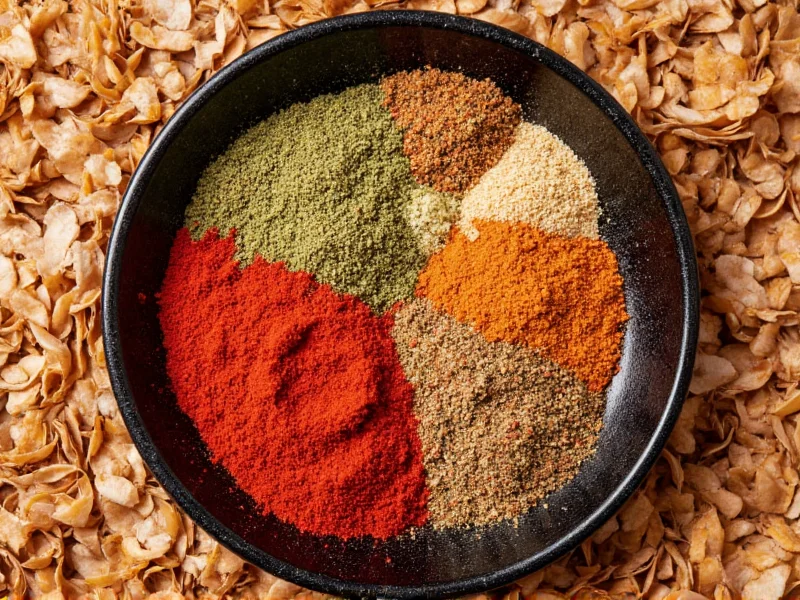Understanding MSG Seasoning and Its Culinary Role
Monosodium glutamate (MSG) represents one of the most misunderstood ingredients in modern cooking. Despite persistent myths, decades of scientific research confirm that MSG seasoning serves as a safe and effective flavor enhancer when used appropriately. The compound forms when glutamic acid, an amino acid naturally present in many foods, combines with sodium.
The Science Behind Umami Enhancement
MSG works by stimulating umami taste receptors on the tongue. Umami, recognized as the fifth basic taste alongside sweet, sour, salty, and bitter, creates that satisfying savory sensation in foods. Glutamate occurs naturally in tomatoes, cheese, mushrooms, and seaweed. MSG seasoning simply concentrates this flavor compound for culinary use.
| Ingredient | Sodium Content | Umami Effect | Common Culinary Uses |
|---|---|---|---|
| MSG Seasoning | 12% sodium | Strong umami enhancement | Broths, sauces, meats, vegetables |
| Table Salt | 39% sodium | Basic saltiness only | General seasoning |
| Soy Sauce | 17% sodium | Moderate umami | Asian dishes, marinades |
Historical Context and Modern Applications
Japanese chemist Kikunae Ikeda first isolated glutamate from kombu seaweed in 1908, identifying it as the source of umami taste. He subsequently developed MSG seasoning as a commercial product. Today, food manufacturers produce MSG through fermentation of starches, sugars, or molasses—similar to processes used for making vinegar, yogurt, or wine.
Chefs worldwide utilize MSG seasoning to enhance flavors while potentially reducing sodium content. Because MSG contains less sodium than table salt while boosting savory perception, it allows for creating satisfying dishes with lower overall sodium levels—a valuable consideration for health-conscious cooking.
Addressing Common Concerns About MSG
Despite persistent myths about "Chinese Restaurant Syndrome," comprehensive scientific reviews by organizations like the FDA, WHO, and EFSA consistently classify MSG as safe for general consumption. Double-blind studies have failed to establish a consistent link between MSG consumption and adverse reactions in the general population.
Some individuals may experience mild, temporary sensitivity to large quantities of MSG consumed on an empty stomach, but these cases remain rare and not scientifically proven to be caused by MSG alone. The scientific consensus confirms that normal culinary use of msg seasoning presents no health risks for most people.
Practical Usage Guidelines for Home Cooks
When incorporating msg seasoning into your cooking, remember these practical tips:
- Start with small amounts—1/8 to 1/4 teaspoon per serving
- Combine with other umami-rich ingredients like tomatoes, mushrooms, or aged cheeses
- Use in dishes where savory depth matters: soups, stews, sauces, and roasted vegetables
- Consider reducing salt by 20-30% when adding msg seasoning to maintain balanced sodium levels
Professional chefs often use msg seasoning to enhance dishes without creating an artificial taste. The key lies in subtle application—MSG should amplify existing flavors rather than dominate them. Understanding how to use msg seasoning properly transforms ordinary meals into extraordinary culinary experiences.
Natural Alternatives and Complementary Ingredients
For those seeking natural sources of umami without processed msg seasoning, several ingredients provide similar flavor enhancement:
- Dried shiitake mushrooms (contain natural glutamates)
- Tomato paste (concentrated umami from ripe tomatoes)
- Parma cheese (aged cheeses develop natural glutamate)
- Miso paste (fermented soybean product rich in umami)
- Seaweed (particularly kombu used in dashi broth)
These natural alternatives work well for "clean label" cooking while providing the savory depth associated with msg seasoning benefits. Many professional kitchens use combinations of these ingredients to achieve complex umami profiles without relying solely on processed additives.
Conclusion: Embracing MSG as a Culinary Tool
MSG seasoning represents a valuable tool in the modern cook's arsenal when understood and used appropriately. By focusing on evidence-based information rather than outdated myths, home cooks and professionals alike can harness the flavor-enhancing properties of this compound. The key to successful implementation lies in moderation and understanding how umami works within the broader context of flavor development.











 浙公网安备
33010002000092号
浙公网安备
33010002000092号 浙B2-20120091-4
浙B2-20120091-4